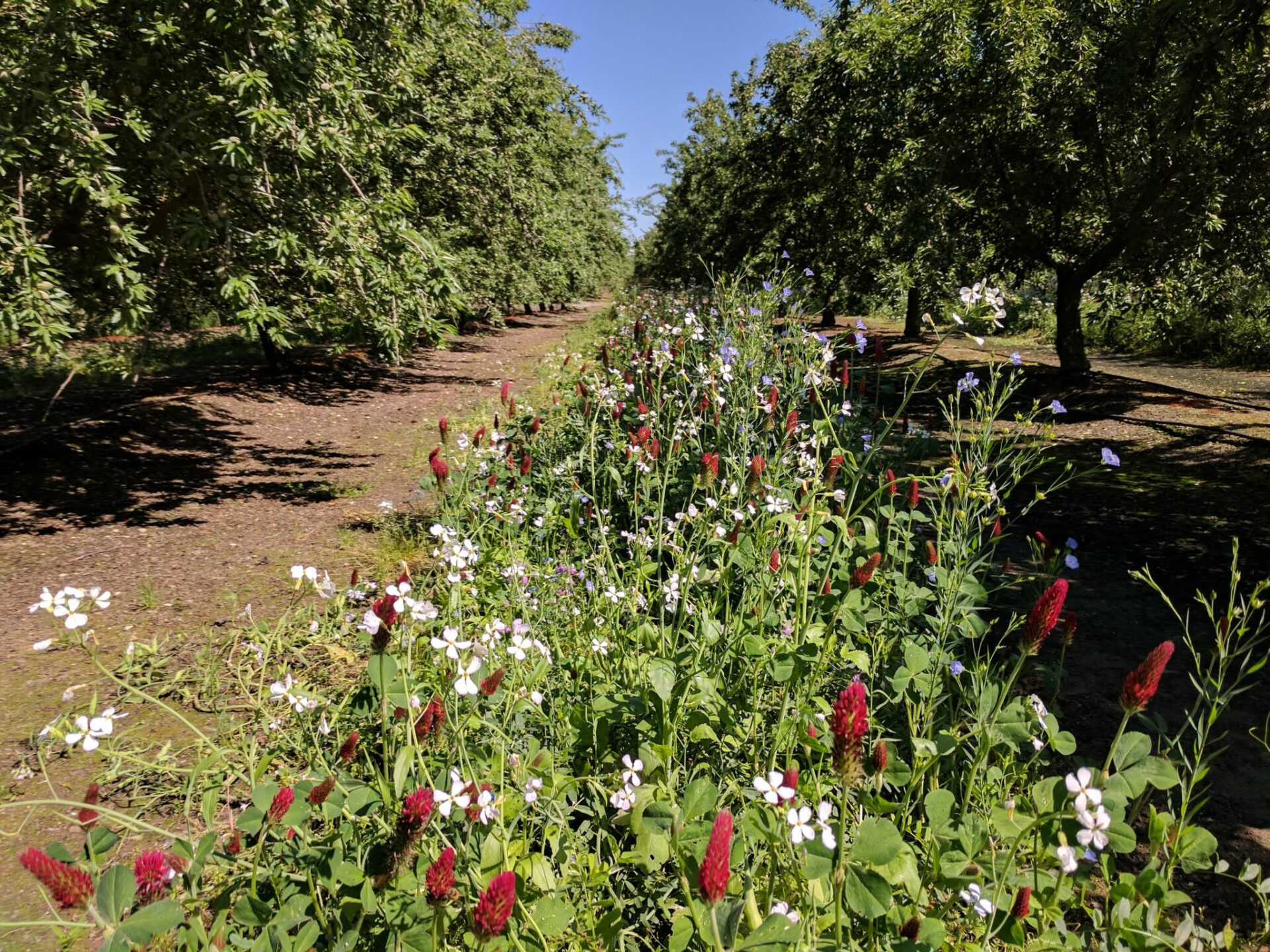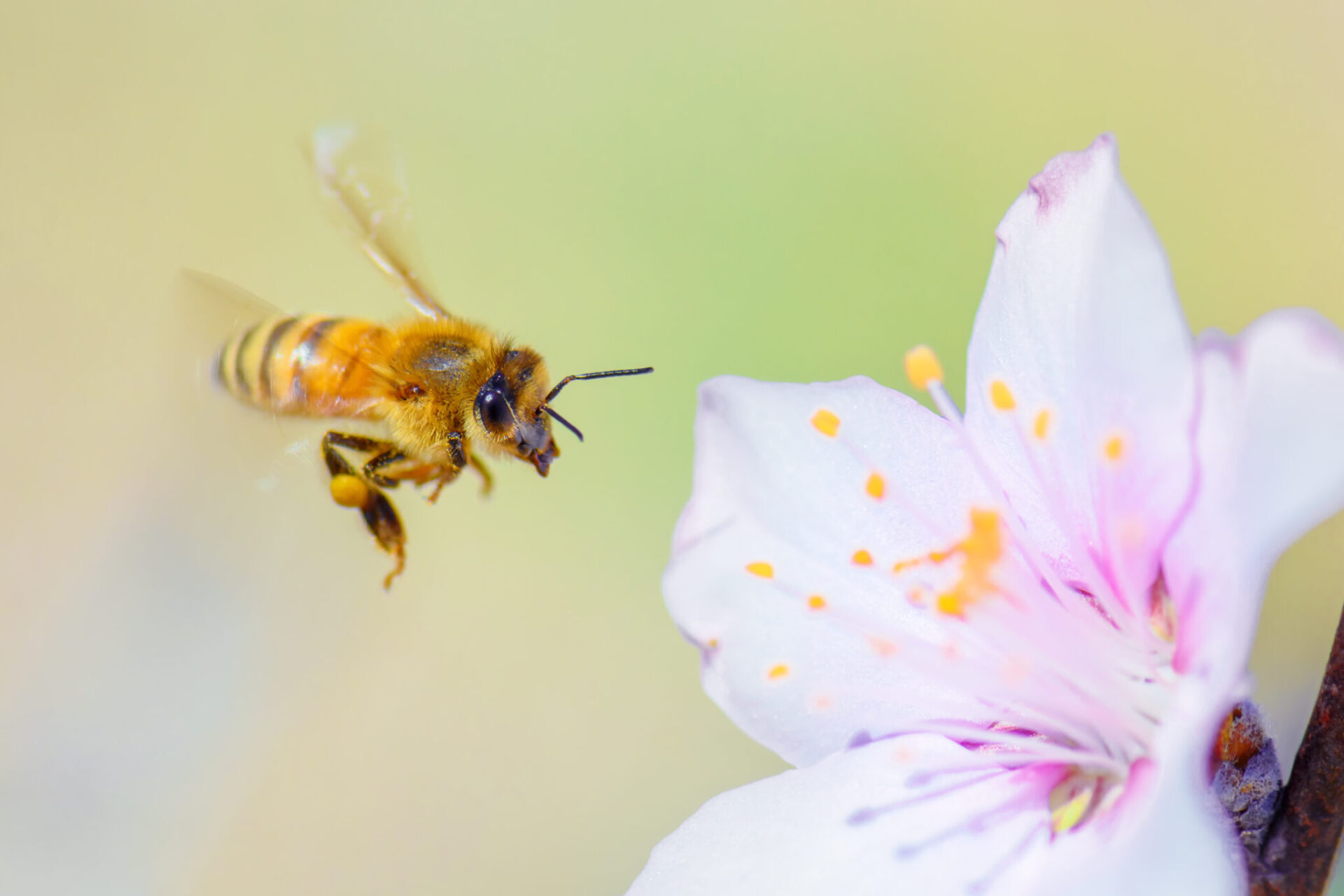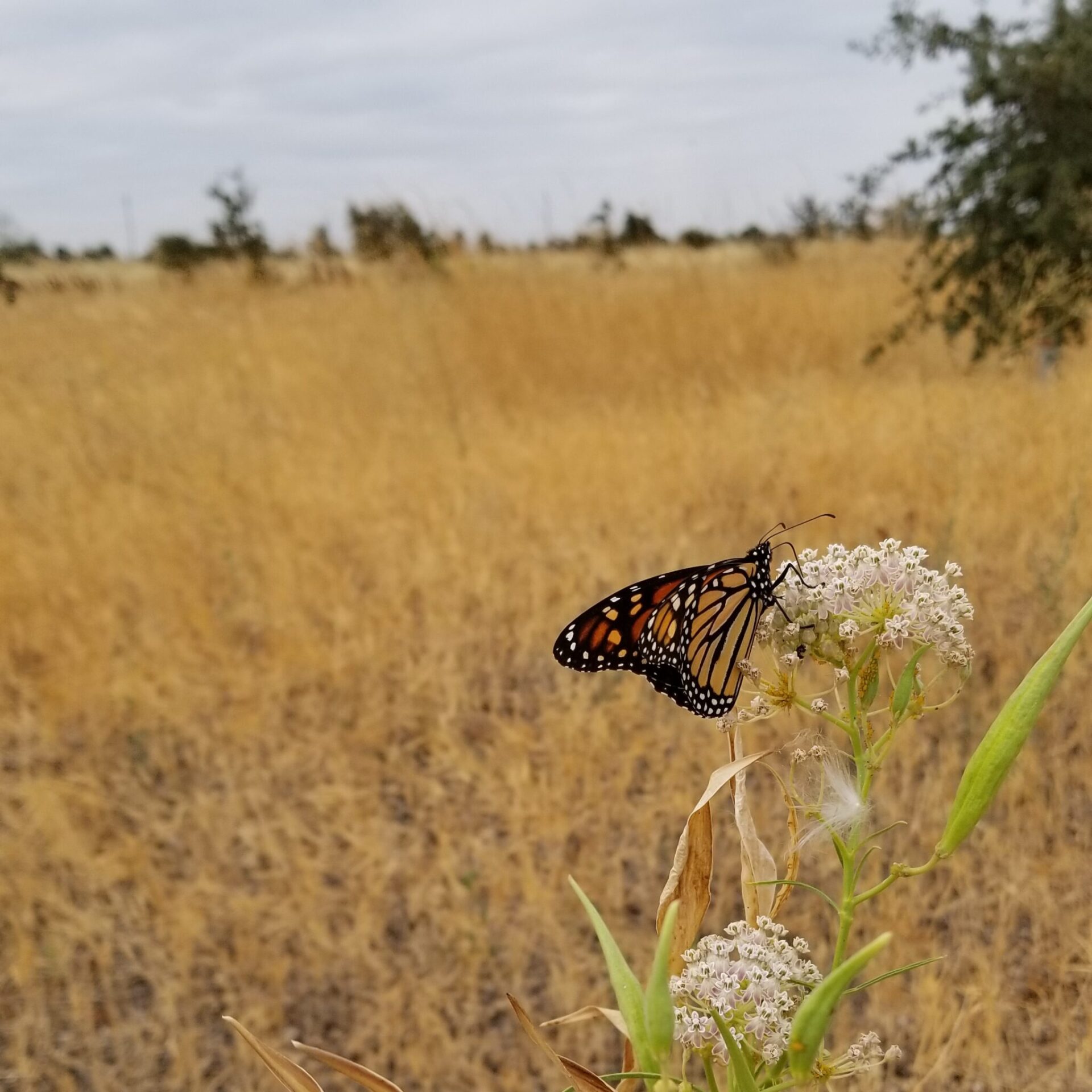
A consortium of agriculture, conservation and industry groups have formed the California Pollinator Coalition aimed at bringing to scale research and cultural practices to preserve and protect honeybees and native pollinators.
During a conference call announcing the launch of the coalition in early April, Laurie Davies Adams, president and CEO of Pollinator Partnership, said the goal of the new California Pollinator Coalition (CPC) is to bring current collaborations between agriculture, research and industry to scale in a way that encourages large-scale adoption of pollinator-friendly practices that increase biodiversity, integrated pest management and carbon sequestration in the soil. The Pollinator Partnership is a 20-year-old non-profit dedicated to pollinator health.
Two of the most commonly adopted pollinator-friendly practices in almond orchards are planting of orchard perimeter hedgerows and in-orchard cover crops to create habitat and provide additional food sources for pollinators. The coalition will aim to fund research into these and other practices, demonstrate their effectiveness and challenges on working lands in California, and encourage their widespread voluntary adoption.
“This is designed to be a large and comprehensive coalition,” Adams said. More than 20 participants have signed onto the coalition, including conservation groups, research and outreach groups including UC ANR, and industry groups including trade groups for almonds, citrus and other specialty crops, livestock groups, pollinator groups and crop consultants. The Almond Board, Pollinator Partnership and CDFA are taking a lead role in the coalition.
Josette Lewis, chief scientific officer for the Almond Board of California (ABC), noted that “almonds and bees are a partnership designed by nature.” In joining the coalition, ABC is extending its support for pollinators beyond the millions of honeybees brought in each year to pollinate the almond crop to include native pollinators, such as birds, bats and butterflies.
“Working lands can and should be part of the solution,” Lewis noted.

Populations of native pollinators, such as the Western Monarch butterfly, are imperiled, according to Xerces Society for Invertebrate Conservation, Native pollinators. In the 1980s, there were an estimated 4.5 million monarchs that overwintered along the Pacific Coast. In 2019, the number had dropped to approximately 29,000, and in 2020, the Western Monarch Thanksgiving Count tallied only 1,914 monarchs. Loss of overwintering habitat is cited as a major contributor to this decline.
CDFA Secretary Karen Ross pledged the support of CDFA and sister state agencies to fund activities and goals of the coalition as well as incentive grants for growers through existing programs such as the Climate Smart Initiative and Healthy Soils Program and noted there are also opportunities to draw down federal dollars from agencies such as the USDA NRCS. The goals of the partnership fall in line with the governor’s biodiversity climate change priorities and are also an important component of food security in California.
Ross noted the importance of encouraging “pragmatic” solutions for land operators.
“The bottom line is we want to establish habitat and provide guidance so if people are reluctant they have what they need to get started. It really is a partnership that can produce on-the-ground results,” Ross said. “Bringing this group together gives us a new model for showing what we can do together.”
The Almond Board hopes to develop new and existing partners for managing habitat for native pollinators, including irrigation districts and other agencies that can help growers offset costs for pollinator-friendly practices. Lewis cited data in the California Ag Sustainability Program that shows 30% of almond acreage has hedgerows maintained with flowering shrubs for pollinator habitat. A recent study that estimated costs of developing hedgerows at about $1,700 an acre noted that only about 10% of the farmers currently practicing hedgerows realize a financial benefit beyond their costs. Grants through the Healthy Soils and NRSC program can help offset some of those costs for growers.
Ross noted the balance growers maintain on choosing which practices to implement in their orchards. One change in practices can have implications on many other practices. How do cover crops, for instance, impact irrigation, nutrient and pest management?
The goal of the coalition will be to demonstrate those tradeoffs and provide technical assistance to help growers manage them.
“It takes money to do these projects,” Adams noted.











